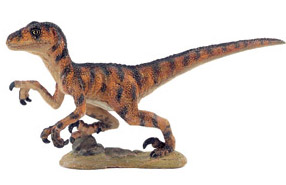Countdown to Series Two of Primeval on ITV1
Series Two of Primeval starts on Saturday 12th January
Primeval, the television show at the vanguard at ITV’s attempts to steal away some of the early Saturday family viewing audience from Doctor Who returns this week to start a run of seven further time travelling episodes.
Series Two of Primeval
Evolutionary zoologist professor Nick Cutter and his glamorous and attractive assistants are once again thrown up against prehistoric animals that are transported backwards and forwards through time by bizarre phenomenon that open up black hole like links between the present day and certain points in geological time.
Although, by its very nature, far fetched but enjoyable nonetheless, a sort of time travelling, trouble shooting “A” team, this series produced in collaboration with Impossible Pictures, the special effects company, has proved very popular and the screening rights have been sold to a number of countries since it aired on ITV in February 2007.
Expect “Raptors”
Episode 1, scheduled for next Saturday (start time 7pm), involves the team having to clear a shopping centre of a family of “raptors” who have found themselves whisked from the Cretaceous to the modern day. Presumably they blundered through a time portal whilst hunting, perhaps enticed by the smell of potential prey. One of the comments made about series one was the lack of actual dinosaurs featured. Series two seems to have noted this and kicks off the start of the second run with dinosaurs taking centre stage.
At the moment we are not sure what type of dinosaurs these raptors are supposed to represent, some reviews we have read refer to them as Utahraptors, but the adults depicted in the programme are too small for this genus of dromaeosaur. Perhaps the are actually Deinonychus, as they appear approximately man-sized. Interestingly, the animators have been keen to give these sickle-clawed monsters protofeathers, in recognition of scientific theory, but although well drawn and animated in a very realistic fashion, one potential inaccuracy concerns the shape of their pupils within their scary, yellow reptilian eyes.
Dromaeosaurs Depicted
These dromaeosaurs are depicted with vertical pupils. These are similar to the pupils seen in modern crocodilians which can close down to a small vertical slit, an adaptation of a nocturnal hunter to be able to cope with the higher levels of light entering the eye during the day. Vertical pupils such as these are found in a number of animals including constrictors, vipers and geckos. These animals are all associated with living in low light levels such as rain-forests or having a primarily nocturnal existence.
The vertical pupils of these dromaeosaurs have probably been added for dramatic effect to make these animals more frightening and alien looking. The large orbits in dromaeosaur skulls indicate that they had good vision and some of the smaller dromaeosaurs such as Troodon may have been nocturnal hunters but it is likely that the larger Maniraptoriformes were active diurnal hunters. It is also probable that these animals had colour vision, just like their near relatives the birds. Interestingly crocodiles are also believed to have good colour vision, although most of the crocodile species are associated with being more active during the hours of darkness, when the ability to see in colour would be of very limited use.
Dangerous Theropods
Dromaeosaurs were perhaps one of the most dangerous types of all the theropods. Scientists have postulated that these animals were speedy, agile, vicious pack hunters that showed a relatively high degree of intelligence for dinosaurs.
If the raptors in Primeval turn out to be representatives of the Deinonychus genus, then this would be apt, considering it was a detailed study of Deinonychus that aided the development of a hypothesis that dinosaurs were active, warm-blooded (endothermic) animals. The American Professor John Ostrom of Yale University, who was responsible for naming and describing Deinonychus in 1969, postulated that some of the smaller, livelier dinosaurs were closer to mammals and birds that modern reptiles in their levels of activity.
There are a number of Deinonychus models and other products available, most depict this dinosaur in a dynamic pose, replicating the type of animal theorised by Ostrom.
Scale models of “Raptors” and other dinosaurs: Dinosaur and Prehistoric Animal Models.
Deinonychus Model
Picture credit: Everything Dinosaur
To visit Everything Dinosaur: Everything Dinosaur Home Page.
About a dozen near complete specimens of Deinonychus have been discovered, including remains of Deinonychus individuals next to Tenontosaurus (a large, hypsilophodontid herbivore) a rare example of predator and prey being found together.
Lets hope that Professor Cutter and his team are able to return these animals back to the Mesozoic, a shopping centre would not be the ideal habitat for these prehistoric animals.
Primeval has attracted quite a fan base and we are sure that series two will build on the success of the first programmes shown last year. Over the last few months or so we have come across a number of web sites and forums dedicated to the series and the actors and actresses who appear in it.
One such site is administered by Jon Donnis, it is the unofficial Primeval fan site. This website contains information on the first series, plus updates on series two, a cast of characters, the monsters and lots and lots of information to keep Primeval fans happy.


